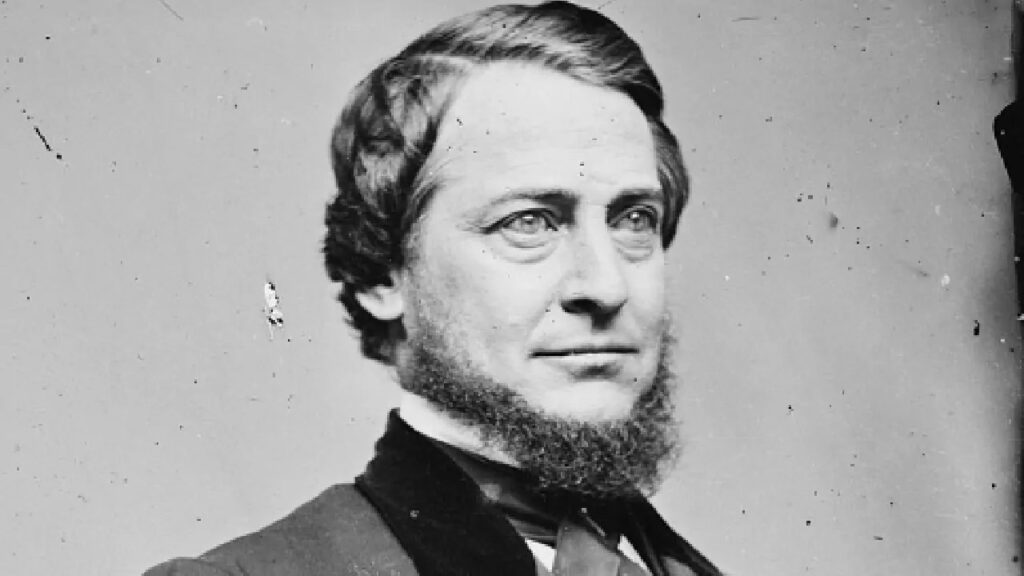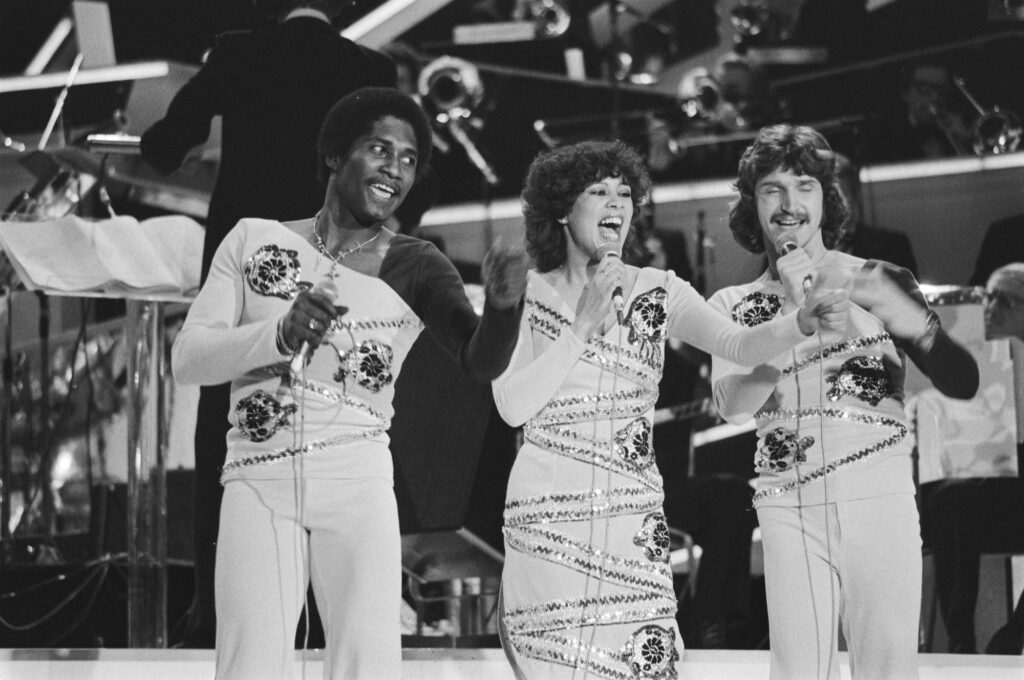Clement L. Vallandigham is included in the history books mostly for what happened at the end of his life. Or, perhaps better put, because of how his life ended. He was a lawyer (and probably one of the rare “good” ones) who some say was the kind of guy who would do anything to get his client off, including, you know, accidentally killing himself, but that statement is just a little bit off. Yet, the history books don’t always mention who Clement was earlier in his life, what he had already done to make a name for himself, so I can’t blame anyone for mistakenly thinking he had lived a normal, boring, mundane life up to that final court case…
Young Clement
On July 29, 1820, (now senior) Clement Vallandigham and his wife Rebecca Laird Vallandigham had a child they named Clement Laird Vallandigham for obvious reasons. They lived in New Lisbon (which was officially renamed Lisbon in 1895 when I guess they determined it wasn’t “new” anymore, or something?) where Clement Senior worked as a presbyterian minister and Rebecca worked nowhere because it was the 1820s. Young Clement was the fifth child to Clement and Rebecca (two more would come along later) and the Vallandigham family would soon discover that raising that many kids on a ministerial salary wasn’t going to cut it. To help make ends meet, Clement Sr. opened a “Classical School” in their home where he taught his kids, as well as several others from the New Lisbon community. Eventually his eldest sons would take over running and teaching at the school.
By the age of two, young Clement knew his alphabet, and by the age of eight, could read and speak Latin. By the time he was finished with his classical education, he was ready to head off to college, but the school believed him to be too young, so he had to spend a couple of years furthering his education at home, partaking in outdoor sports, and hanging out with a group of people who believed that God favored the physically fit, so our boy got a lot of exercise.
At one point in his youth, he and a number of young gay (gay meaning jovial, not homosexual, since this is the 1800s) men were invited to a party on “The Eastern Shores of Maryland” and like most modern parties, it started out fine and dandy enough, but once the liquor bottles came out, things got a bit wild. Clement was the only boy not to partake in the liquid refreshments and instead insisted on returning home. But the host of the party didn’t think this was a good idea and convinced him to stay. His friends (if he still called them that afterwards) however decided it was going to be their mission to share their Bacchus’s gaiety (drunken folly) with Clement whether he liked it or not. They tried persuasion at first, and when that didn’t work out, they decided to try brute force. Clement, however, decided otherwise, pulling out his pistol and threatening to shoot anyone who tried to force the drink upon him. This, obviously, caught his drunk friends off guard and they all paused, which gave Clement time to lecture them about the morals of drinking, which may have succeeded if the boys weren’t totally drunk, so Clement left the party instead.
Clement Heads Off To College
In 1937, Clement heads off to Jefferson College in Canonsburg, Pennsylvania where he is more than prepared for his classes, but divides his time between his studies, the exercises of the Franklyn Literary Society, where he falls into a leadership position. While, at school, he’s doing excellent – back home in Ohio, things for his family aren’t going so well. The money he’s spending on College is, he thinks, putting some strain on the family’s finances, and since his dad’s not in the best of health and the family is struggling – he makes the decision not to go back a second (and final?) year.
Instead, he and a friend head off to Snow Hill to teach there, and maybe that will somehow help him earn his college degree. It’ll also give him some money, which he can send back home, and use to re-enter college later.
In 1940, he returned home and spent the summer helping out with family things and also writing his “Rules for Moral Culture” (which gets published the following year) that pretty much spells out how to be a good, decent, man – saying things like: Talk to God; be gay (again, that means cheerful and lively); and being honest and generous and open hearted; and let’s not forget “avoid evil”. You get the picture. There is, however, a little debate among historians as to whether these “rules” were original, or if he got them from somewhere else, but many believe it’s a mixture of both.
The following year, Clement is back at Jefferson College and it isn’t too long before he finds himself at war with the President of the College, one Doc Brown (no, not the one who invented the Delorean Time Machine, I think, although if he went back in time, maybe he was. Anyway…)
Dr. Brown and Clement were in class one day discussing Constitutional Law when the two had what probably should have been a minor disagreement (as if that doesn’t happen anymore). Vallandigham spoke with such passion and had such an advanced understanding of The Constitution that Dr. Brown … well, he didn’t take it very well. Brown was used to being in a position of power (President of the University) and felt threatened, he was probably a bit embarrassed, and being the kind of guy who likes to Act Now and Apologize Later, he decided that maybe violence was the answer. Clement wasn’t about to let that happen, however, so he took that moment to resign from the college and therefore never actually earned his degree.
Law and Politics
Back in Ohio, Clement met up with his friend Edwin Stanton (who would later enter the history books for himself as Lincoln’s Secretary of War) who would before long loan Clement five hundred bucks to do what he needed to do to get his law degree and open his own law firm, which he did in Dayton.
The two men were a lot alike, in terms of temperament and upbringing, but there was one major wedge between them. Stanton was decisively an abolitionist and Vallandigham was an anti-abolitionist.
Shortly after Clement opened his law practice, he also decided to get involved in politics. The Ohio Democratic Party seems to love him and nominate him to be their representative on the Ohio Legislature, and considering he had no opposition, he was elected. At around the same time, he became the editor of the Dayton Empire newspaper, so I am starting to think this guy doesn’t like to sit still for very long.
In the Ohio Legislature, he once again adopted a set of “rules” he was to live by. These included ideas such as not to interfere in local matters unless there was a grave general principle; to not be petty; to only speak when you have something that needs to be listened to; and always act in a dignified way.
Perhaps the most known thing he did in his Legislative days was to vote against the repeal of Black Laws (pre-civil war laws that aimed to segregate, among other things, blacks from whites) although his stance on this was solely because he thought the issue should be voted on by Ohio Voters and not the legislative bodies.
Shortly after this, however, he tried to get himself nominated for the position of lieutenant governor, to which the Ohio Democratic Party said something along the lines of “Thanks, but no thanks.”
The House of Representatives
In 1854, Clement ran for a seat on the House of Representatives, but narrowly lost (by 23 votes). Not ready to accept defeat this time, Vallandigham looked things over and declared that many “illegal votes” had been cast. (This is a practice that seemingly still happens to this day.) There was an investigation into the matter.
To be fair, there was a lot going on in Washington D.C. that year which one way or another was going to change some pretty big things in America, a lot of it involving the slavery issue, especially the fight over Kansas. Also, while some parties like the Democrats were going strong, other parties like the Whig Party weren’t doing all that well and the new Republican Party was still trying to find its way. So, for now, let’s just say that politics in America was a complete mess and ultimately Clement Vallandigham won his seat (only big problem was that it was the last day of session, oops.) On a plus note (at least for him) he ran again for the next session and won.
In 1859, he just happened to be passing through town when John Brown, who raided Harper’s Ferry, was caught and Clement found himself among the government officials who questioned (interrogated) Brown. Throughout this ordeal, Clement was conflicted. Not only was he at odds with his political party over slavery, but he was also conflicted within himself – struggling to find a balance between being a politician and being a gentleman.
Now that he was playing with National politics, he was discovering it was vastly different from the Local playground of State Politics. His pro-slavery views put him at odds with many of his fellow Democrats. His advocacy for “states rights” (which for him went well beyond the topic of slavery) likewise made him a target for all political parties active in the northern states who equated those values and beliefs with “the dirty south”. In his mind, he wanted to play the political game with gentlemen’s values (or, at least what he believed were gentlemen’s values) he discovered how difficult that would eventually turn out to be.
1963
By the year 1963, Vallandigham had lost (by a large margin) his seat in the House of Representatives, and his career as a public servant was nearing its sell-by date. On May 5th, he was arrested for violating Ambrose Burnside’s General Order Number 38, which made it illegal to criticize The Civil War, which is exactly what Vallandigham did. At his trial, several people testified they had heard various statements criticizing the war, calling out political leaders and even referring to the Commander in Chief as King Lincoln, it was hard to see how Clement had any defense. Clement, however, called a single witness, an outspoken anti-war congressman and friend, who tried (and failed) to support his views. He was, briefly, found guilty and sentenced to confinement at Fort Warren, Massachusetts.
The leaders in Washington (and in particular, President Lincoln) seemed to fear one thing above all else – that Clement Vallandigham was being set up for martyrdom and that was the last thing they wanted. After the supreme court decided that Vallandigham’s arrest was unlawful, Lincoln ordered him to be exiled … to the South. After being marched through the frontlines, Clement surrendered, calling himself a “prisoner of war”.
While some of his views (mostly views on slavery) did align with the south, he still considered himself a Northerner, a Citizen of Ohio, and really wanted nothing to do with the south, their people, or the rest of what they stood for. Jefferson Davis (confederate leader) didn’t really want him, either, so he housed him in Wilmington, North Carolina as an “Alien Enemy”. President Lincoln did try and use Vallandigham as political leverage, promising to reverse his deportation if Ohio agreed to a few of his administration’s new policies. Needless to say, this didn’t go over very well with Ohio governmental leaders.
Vallandigham left the South for Bermuda, and then made his way to Onterio, Canada. As a response to Lincoln’s promise to free Vallandigham, Ohio responded the way really only Ohio would – they nominated him (Clement) to run in the next election for the role of Governor of Ohio, which he ran out of his hotel room in Ontario where he is said to have gotten a steady stream of supporters. Unfortunately, he was up against a very popular Pro-Union Anti-Copperhead John Brough, who ultimately won in pretty much a landslide.
Eventually he would be allowed to return to Ohio, where he ran for a few more political parties, but his pro-slavery views seemed to get the better of him. For a brief moment, he did gain some support with the “New Departure” policy, but I think by then the damage had already been done. He would, of course, resume his law practice in Dayton.
The Thomas McGehean Trial
In 1871, Clement Vallandigham went to court defending Thomas McGehean, who was being tried for murder. For a brief time, this was the trial of the moment. McGehean had been involved in a bar fight that had included many people, but in particular a man named Tom Myers. At some point while Tom and Clement were violently going at it, the brawl came to a sudden pause as a loud bang was heard, followed by Myers falling over dead, and then the brawl continued until either its rightful conclusion or when law enforcement showed up.
According to Vallandigham, Myers shot himself. According to prosecutors, McGehean shot Myers. According to pretty much everyone in the bar that night, they were too busy fighting and having a good time to really notice, but everyone was sure that McGehean and Myers were going at it pretty bad.
As the trial was coming to an end, Vallandigham wanted to find a way to prove his theory, but the lack of modern forensic advancements we have today made that task damn near impossible. When he looked at all the evidence, it was clear to him that Myers shot himself. He looked at where people were, approximately, the angle of the bullet when it entered Myers body, the way the two individuals were probably standing when the shot was fired – to Clement it all made sense. To everyone else, the two were fighting, one wound up dead so obviously it was the other guy.
In a hotel room in The Lebanon House (now it’s called The Golden Lamb) Clement had a brilliant idea: reenacting the shooting to prove that Myers shot himself. And, with Vallandigham playing Myers, they did a practice run. Vallandigham’s theory was that the gun had gone off accidentally when Myers pulled the gun from its holster. So, with someone else standing approximately where McGehean was standing, Vallandigham positioned himself as he suspected Myers would have been, he pulled a gun out of a holster around his waist. Somehow, accidentally, the gun went off. Vallandigham, just like he said Myers had, shot himself in the leg and died the next day as a result. A few days later, he would be buried at Dayton’s Woodland Cemetery.
I am sure you’re wondering how the trial ended? Was McGehean found guilty or not guilty? Well, after Vallandigham’s death was reported to the courts, his client was found not guilty because Vallandigham had, ultimately and unintentionally, proved that it was not only possible, but probable that Tom Myers had in fact shot himself.



